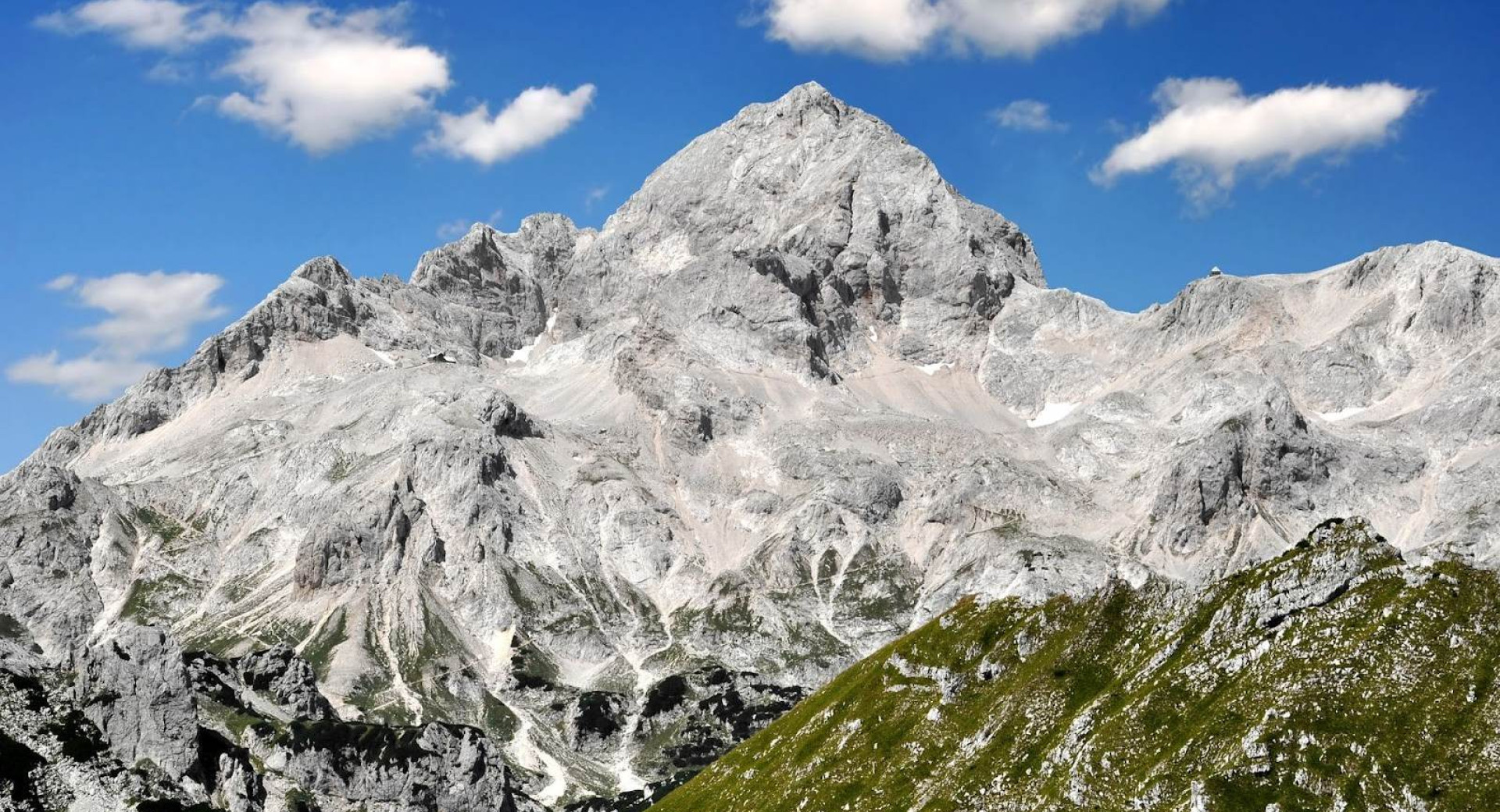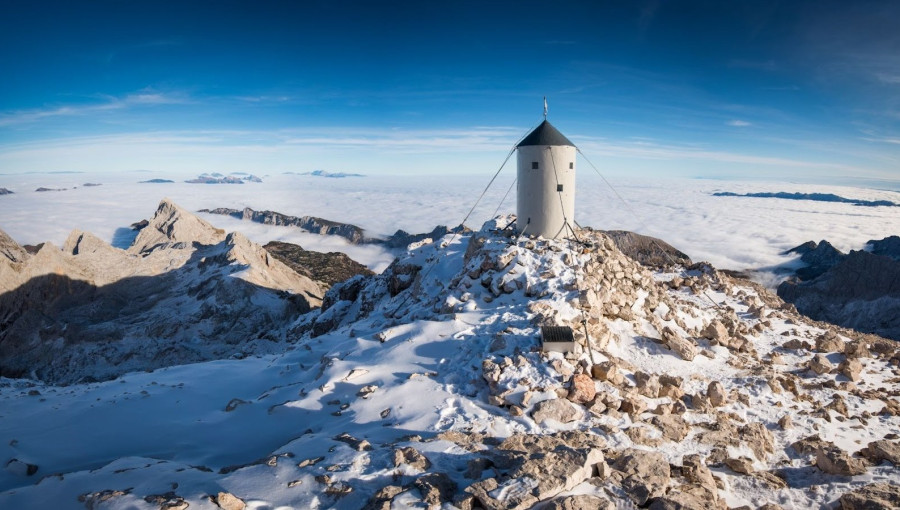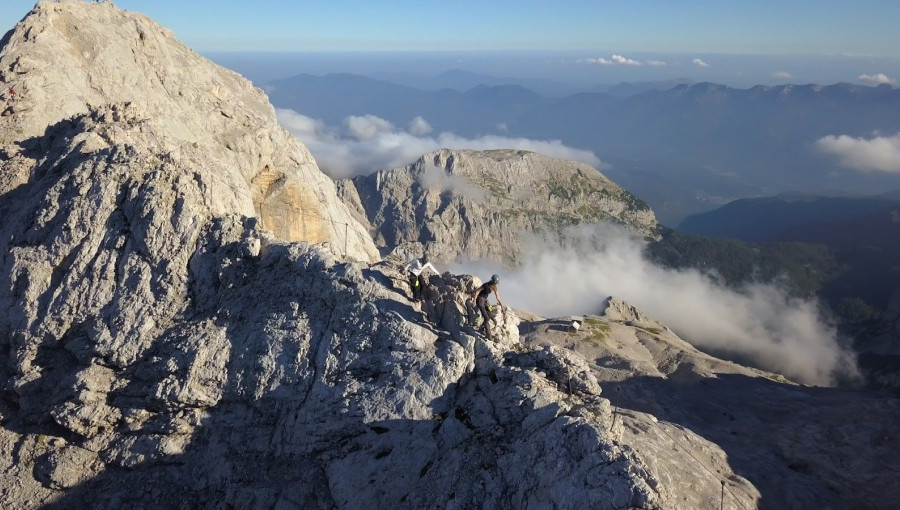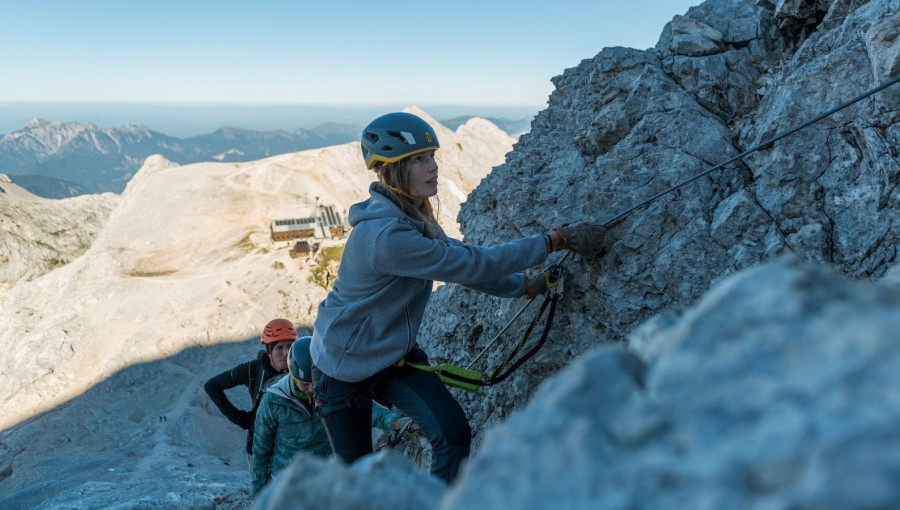Climbing Mt. Triglav, the symbol of Slovenia
If you’ve ever been to Slovenia there’s a high chance you’ve seen Mount Triglav. At 2864 m, it is the highest mountain in the country and the Julian Alps. It’s so prominent it can be seen from all directions. Not only is Triglav Slovenia’s national symbol, hiking is such a popular activity among Slovenians they consider it their national sport. And climbing Mt. Triglav is on everybody’s bucket list, as it is said you are only a true Slovenian once you’ve managed to reach its top.

About Triglav
Triglav was first conquered in 1778 when four brave men reached its summit. At the time, it was an extremely difficult climb, especially where the knife sharp ridge connected Little Triglav with the main summit. It was so narrow, they had to sit on it as if riding a horse in order to cross it!
Later, when mountaineering became more popular, the ridge was artificially widened, the route was protected with cables, and Triglav became more accessible to regular people who wished to enjoy its view. And what a view it is - in nice weather you can see all the way from Austria’s highest mountains in the North, to the Adriatic sea in the South, the Italian Dolomites in the West and the endless hills and valleys of Eastern Slovenia.
In 1895, a local priest and Slovenian patriot Jakob Aljaž bought the land on Triglav’s peak and built a small metal shelter there. It is called the Aljaž Tower - it was constructed by five men who brought the parts of the tower to the summit and assembled it in five hours on an August day in 1895. The grand opening took place that same day, with Aljaž officially donating the shelter to the Slovene Alpine Society.

Climbing Triglav
Climbing Mount Triglav is difficult but also very rewarding. Most people can do it if they approach the challenge with the right mindset. On average, reaching the summit from the valley takes 6-7 hours, so sleeping in one of the huts on the way is recommended.
The most convenient stops are either the Planika Lodge or the Triglav Lodge at Kredarica. They offer only basic comfort as all supplies, including drinking water, have to be transported from the valley with a helicopter. But like most Slovenian mountain huts, they’re very cosy and serve delicious traditional food. Because of their high altitude location, it only takes 1-2 hours to reach the top from the huts, making it a much safer ascent in case of a sudden summer storm.
When to go?
The best season for climbing Triglav is late summer when the snow is gone and afternoon heat storms are not as frequent as earlier in the summer. The best months are August and September, although the mountain can get pretty crowded, especially during the weekends - many Slovenians visit Triglav each year. Therefore early booking of accommodation in the huts is highly advisable.
Winter ascents are rare, because the last part of the climb is very steep and the cables and in-situ protection are covered with snow, making it a climb only reserved for very experienced mountain climbers. The ascent to the Kredarica hut is relatively easy in winter and very popular, mostly with tour skiers. It is also possible to ski down from the summit of Triglav, which is one of the hardest extreme ski routes in Slovenia and only done every few years, in optimal conditions.
The best routes to climb Triglav
Each year, more than 80,000 people climb Mount Triglav. There are plenty of marked routes leading to the summit of Triglav. The quickest and most popular is the one from the Krma Valley, passing the Kredarica or Planika hut. The first part is relatively easy, while the summit push is demanding and steep no matter what route you take. More confident climbers can clip their via ferrata set on the cables that are set up on the narrow ridge, while less experienced hikers would benefit greatly from having a guide navigate them through this part of the climb.

For inexperienced mountaineers it is best to hire a Triglav guide for the tour as there are several things that can go wrong - getting lost, being caught in a sudden afternoon storm or experiencing vertigo on an exposed section, to name just a few. Come prepared and don’t underestimate the climb.
Another popular route is the route from Pokljuka which is longer but arguably more scenic. The hardest routes start in the Vrata valley and trace the mighty Triglav North Face. Those routes are steep and exposed most of the time, suitable for experienced mountaineers craving adrenaline.

Do I need a guide to climb Triglav?
Most people will have a much better experience if they climb Triglav with a guide . An experienced guide will take care of the logistics of the climb, propose the best timing according to the weather forecast and ensure everyones’ safety. It is not uncommon for bad weather to strike the highlands of the Julian Alps and navigating can be extremely demanding due to zero vegetation and indistinct paths on stony landscape. The upper part of the Triglav climb is very exposed and steep and most people feel best when they’re securely tied onto a rope of a professional guide. With a great guide you will also learn useful hiking and climbing techniques, and hear some interesting facts and anecdotes about the places you hike.
The mountains are a beautiful, but potentially dangerous place. Choose the option that suits your needs and skills the best to make sure you will be able to enjoy the physical challenge and stunning views of the Julian Alps.

